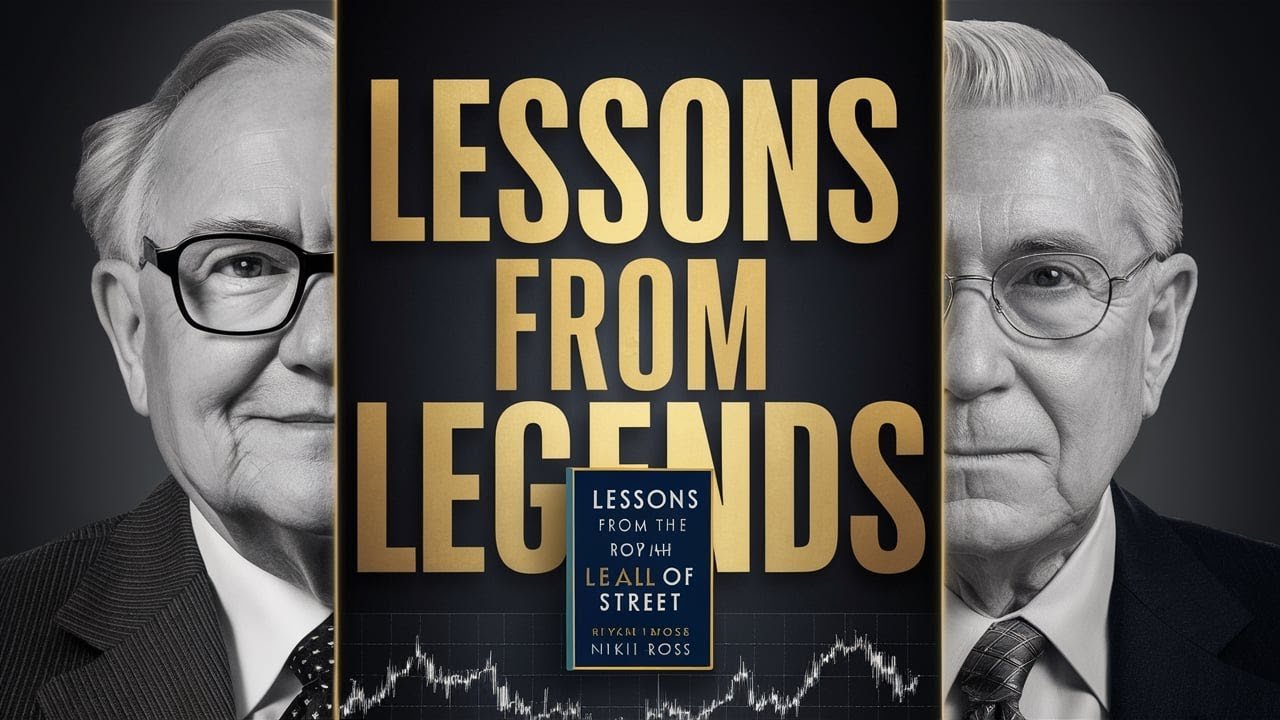Imagine knowing secrets that could change your financial future forever. Shhh… we’re about to dive deep into the mysteries of Wall Street, unveiling insights that big investors don’t want you to know.
Ever wondered how some folks seem to have the Midas touch when picking stocks, while others falter? It’s not luck – it’s strategy, and you’re about to unlock it.
Forget the mundane financial tips you’re used to. This is your ticket to understanding what really moves markets, what experts rely on, and why the most seasoned traders keep these secrets close to their chest.
From decoding market movements to understanding hidden signals, we’ll walk you through a playbook that’s helped the pros stay ahead. You might think you know Wall Street, but these revelations are bound to trip your mind.
Ready to become the savvy investor you always dreamed of? Keep reading to find out a lesser-known factor that could dramatically change your investment approach. Let’s dive into the untold, powerful tool that every successful investor uses but rarely talks about.
History and Impact of Wall Street

The epicenter of global finance, Wall Street’s history is as illustrious as it is complex. From its humble beginnings as a Dutch settlement’s street to its modern-day ascendancy as the throbbing heart of capitalism, Wall Street’s story is riveting.
The 1792 Buttonwood Agreement marked the birth of the New York Stock Exchange, capturing the essence of structured trading. Over the centuries, Wall Street has seen it all, from the Roaring Twenties’ boom to the dramatic crash of 1929.
But amid the chaos, one thing remains constant: Wall Street’s profound impact on the global economy. Those iconic skyscrapers aren’t just impressive; they hold power over markets, shaping policies and economies worldwide.
So, how does Wall Street wield such immense influence, and what does it mean for your investments? Let’s explore some of the pivotal moments and changes that define its place in the financial system.
The constant evolution due to technological advancements, policy changes, and global phenomena keep it a dynamic force that we, as investors, must navigate with adeptness. Whether it’s the advent of algorithmic trading or the implementation of new financial regulations, each shift carves new paths for both risks and rewards.
Even within the fast-paced world of stock exchanges, certain patterns and cycles repeat themselves. These can serve as valuable lessons if you know what to look for. Recognizing these can keep you a step ahead, ready to turn challenges into opportunities.
Understanding Wall Street’s substantial reach can prepare us better for future financial tides, making it a thrilling ride rather than a dreaded gamble.
Key Market Players and Their Strategies
The stock market might seem like a colossal enigma at times, but at the core are strategic, well-calculated moves by key market players. Hedge fund moguls, institutional investors, and savvy individual traders pull the strings.
Ever wonder how hedge fund titans like Ray Dalio or Warren Buffet stay consistently successful? It’s no accident. They meticulously analyze market indicators, macroeconomic trends, and often place bets where others dare not tread.
Their playbooks aren’t locked away. Their strategies often involve patience, diversification, and using data to predict future market directions. Understanding their playbook can offer you an edge in anticipating market movements.
Institutional investors, like pension funds and insurance companies, frequently employ long-term strategies. They rely heavily on research, risk management, and a steady focus on larger economic indicators. By observing their moves, you can identify robust trends.
Then there’s the agile individual trader who capitalizes on market volatility. Quick decision-making, in-depth technical analysis, and a bit of instinct often lead the way. Notice how swiftly they adapt to news, riding the waves while keeping their risks minimized.
Knowing these players’ strategies offers you a multi-faceted understanding of the market. It allows you to diversify your approach and make informed decisions, whether you’re investing long-term or playing the market’s ups and downs.
Navigating Market Trends
Spotting market trends is akin to having a crystal ball. It involves more than just a gut feeling; it’s about connecting dots using the right information.
Understanding these patterns can vastly enhance your investment strategy, turning the seemingly unpredictable into calculated steps toward success. But trends aren’t a monolith.
Segmentation is crucial. There are short-term trends born out of daily market rumblings, contrasted with long-term trends that signal broader economic shifts. A skilled investor knows how to balance both, capitalizing on immediate opportunities while positioning for future growth.
Imagine recognizing a budding industry trend early, like the explosion of e-commerce or renewable energy sectors. Jumping on the right train early can lead to significant financial windfalls.
From economic reports, emerging technology news, to global political developments, various factors contribute to trend formation. Successful trend navigation requires a keen observance of these signals, translating them into actionable insights.
The Role of Technology in Modern Investing

Technology has revolutionized the face of investing. From algorithmic trading to robo-advisors, what was once a manual process is now seamless, rapid, and data-driven.
Imagine entrusting some of your decision-making process to sophisticated algorithms that shuffle through mountains of data in seconds. That’s the power of modern tech in investing, providing unprecedented insights and opportunities.
But while technology offers immense power, it’s crucial to understand its functions and limitations. Algorithms follow patterns, and their success hinges on the quality of data and the assumptions they’re programmed with.
Robo-advisors have democratized investing, making financial management accessible to those previously intimidated by its complexities. For a small fee, they provide personalized investment recommendations, helping you optimize your strategy effortlessly.
Meanwhile, the rise of blockchain technology and cryptocurrencies introduces new dimensions and risks. Understanding these technologies will prepare you to adapt and thrive as financial landscapes continue to morph.
To make technology work for you, stay updated with tech trends. Harness the power of analytical tools, balance them with human insight, and you’re on your way to becoming a forward-looking investor.
Star Investment Strategies That Outshine Others
When it comes to investment strategies, not all are made equal. Some continue to outpace expectations, revered by veteran investors and savvy newcomers alike.
There’s value investing, favored by Warren Buffet, focusing on undervalued stocks with long-term potential. Then there’s growth investing, which targets companies expected to grow at an above-average pace, like tech startups.
For those who find joy in deciphering economic puzzles, macro investing offers pathways through global economic indicators, currency fluctuations, and geopolitical events.
Another thrilling approach is day trading. Fast-paced and exhilarating, it requires keen attentiveness to short-term market movements. With potential high rewards come responsibilities; it’s a world for the diligent and the brave.
Lastly, let’s not forget socially responsible investing, aligning financial goals with personal values. It’s heartening to know your fund allocates assets to companies prioritizing environmental, social, and governance criteria.
Pick a strategy that aligns with your goals and risk tolerance. Experiment, learn, and adapt as you explore the dynamic world of investing.
Understanding Economic Indicators and Their Influence
Ever felt overwhelmed by economic data releases? Those dry numbers are the breadcrumbs leading you to informed investment decisions.
Gross Domestic Product (GDP), unemployment rates, and consumer price indexes carry a wealth of insights about economic health. When GDP grows, it’s often a signal of promising conditions, potentially bolstering stock markets.
A sharp focus on labor markets can shed light on economic activity. A steady decline in unemployment signals a robust economy, catalyzing investor confidence.
Inflation data weighs in heavily, affecting purchasing power and influencing central banks’ monetary policies. Spotting inflation trends can guide your decisions on asset allocations.
So what does it mean for you? Grasping the significance of these indicators, and more critically, their interplay, provides a framework for aligning your strategies with economic cycles.
The more you familiarize yourself, the more empowered you’ll be to predict market movements and adjust your portfolio accordingly.


